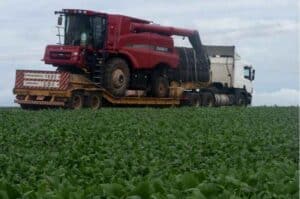The IBGE released, this Wednesday (4/3), data on the Brazilian Gross Domestic Product (GDP) for the fourth half of 2019. In the agricultural sector, the increase was 1.3%, a result lower than the 2018, where the high was 1.4%.
In 2017, the sector rose a significant 14.2%. For the Confederation of Agriculture and Livestock of Brazil (CNA), however, the result was within expectations.
The entity's technical advisor, Paulo Camuri, stated that the result of agriculture came in above the average of the Brazilian GDP. "A farming is still growing at a rate higher than Brazil's GDP. In the case of agriculture, we believe that 1.3% was in line with what we had been projecting. We know that expectations for the Brazilian GDP were for an increase of 2.5% and ended at 1.1%. This is associated with the delay in approving the reforms”.

Exceptional productivity
Although Camuri argues that comparing 2019 with 2018 is using an excellent year with a year. According to him, despite the difference, last year had a good production.
“The 2019 production was 4 million tons less than in 2018. But that doesn't mean it was a bad year. It's just that we compare 2019 with 2018, which was exceptional in productivity and daily production", explains the advisor.
In terms of livestock, Camuri reveals that production can grow and prices can increase in the field of beef and pork. “While last year there was an increase in production and price, for this year we only see this for beef and pork. When it comes to chicken, milk and eggs, we see an increase in production, but the price should drop. In these first months of the year, the price is already lower than last year.”
Agriculture and soy
Thus, the participation of the agricultural sector in the Brazilian GDP is historically 5%. It is currently at 4.5%. A major factor influencing the GDP of agriculture and livestock is soy. Even so, according to Camuri, the price of soybeans in the first half of 2019 was higher because of the trade war between the US and China. “China was privileging non-US soybeans. This has been happening since 2018.”
According to the advisor, soy is the flagship of Brazilian agriculture. “R$ 1 in every R$ 4 of the Brazilian agricultural crop is soybean. For this year 2020, we forecast R$ 700 billion in the total crop.
Of these, R$ 170 billion is soybeans. Our highlights are soy and corn. Coffee also has a positive outlook, but there is a downward trend in prices.” The drop in coffee prices can be bad for producers, according to him.
Therefore, José Carlos Hausknecht, a partner at MB Agro, explains that climate problems were determining factors in last year's soy production. “Last year there was a climate problem in soy and it was smaller than 2018.
This ended up reducing GDP growth. Despite this drop being offset by the supply of corn and meat, it could have been much better. But this is normal in agriculture. We have bad years and good years”, explains Hausknecht.
He also reveals that the forecast for the sector for this year is good. Although producers are seeing the weather conditions with good eyes. “Everything indicates that it will be a good harvest this year. The increase in the (planted) area contributes, but the climate is being more favorable. It’s raining a lot,” adds José.


